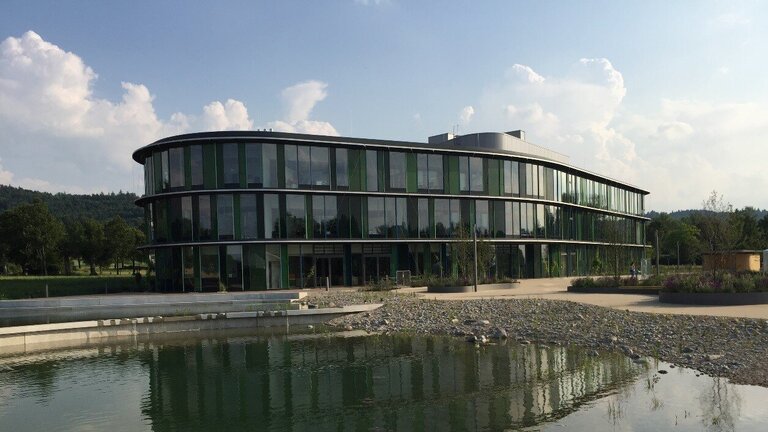WALA has expanded its premises in Bad Boll by adding a new laboratory and space for around 180 employees. The first of several possible buildings to be constructed on the future WALA campus was the new laboratory completed at the end of April. The laboratory has a footprint of over 5,000 square metres (net floor area) and will be used especially for analytical development and research, quality control and for the company’s microbiology facility. The quality control centre carries out release analyses on all ingredients and finished products. Activities undertaken since staff moved into the building include examining the identity and purity of around a thousand different source materials.
WALA has invested a total of approximately EUR 30 million in the new laboratory and the surrounding compound. The site location in the water conservation area on the ‘thermal meadows’ resulted in a number of planning and organisational challenges. Drees & Sommer’s Life Sciences team provided project management support for WALA in order to meet these challenges. The manufacturer of WALA anthroposophical medicines and Dr. Hauschka natural and biocosmetic products attaches a great deal of importance to harmony between human beings and nature. With this in mind, WALA and
Drees & Sommer worked together on evaluating and optimising the WALA’s corporate principles for sustainable construction.
The new building will be lit in an environmentally friendly manner. The energy concept for the building includes a heat recovery system, photovoltaic modules on the roof and a wood pellet heating system. These measures have succeeded in achieving energy usage of around 25 percent less than that required under EnEV (Energy Saving Ordinance) 2014. WALA was also very careful to employ measures during the construction process that were environmentally friendly and helped to preserve the environment. Excavated materials that could be used for agricultural purposes were deposited in suitable cultivated areas. By employing certain safeguards and adding further biotope areas, it was also possible to protect the indigenous linden burn cow beetles and sand lizards.
